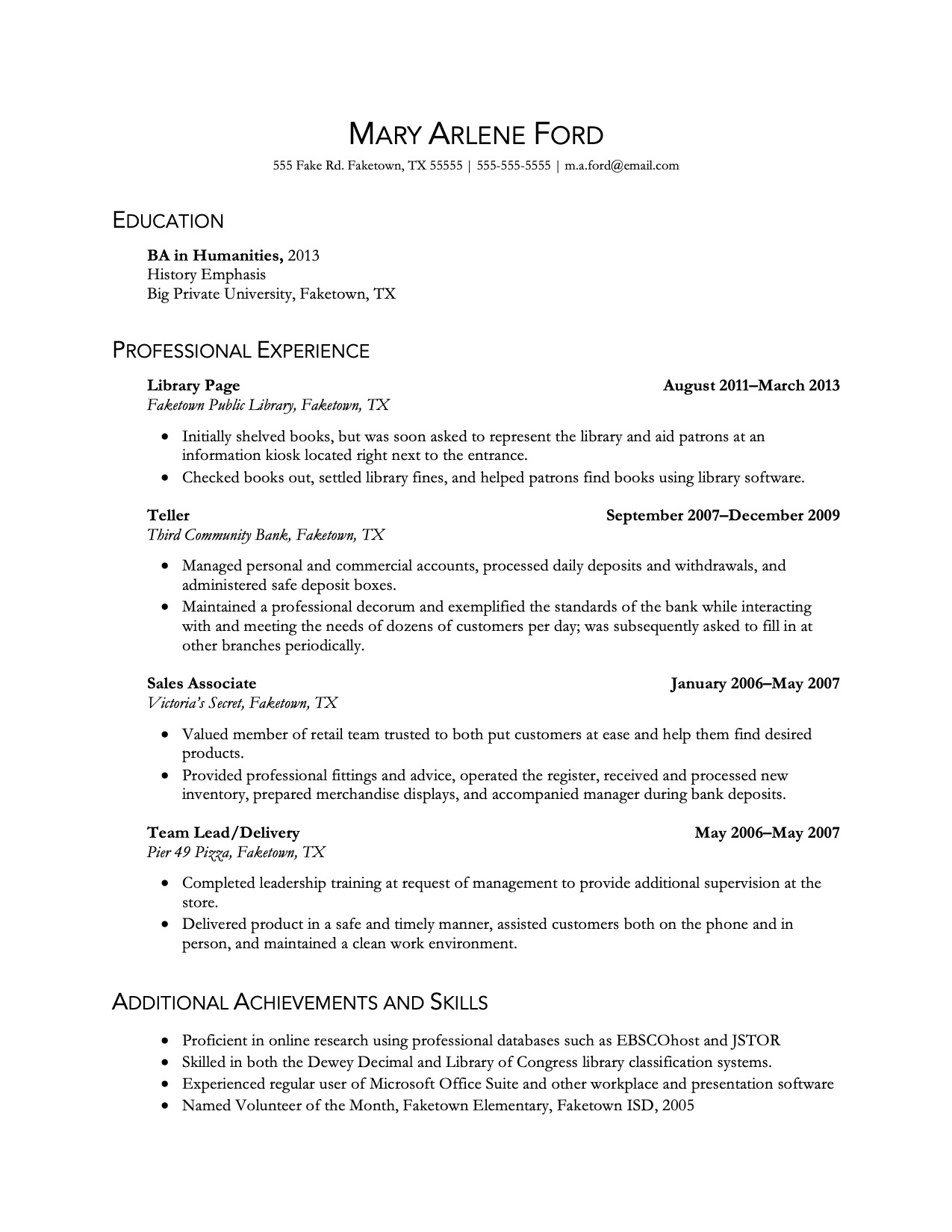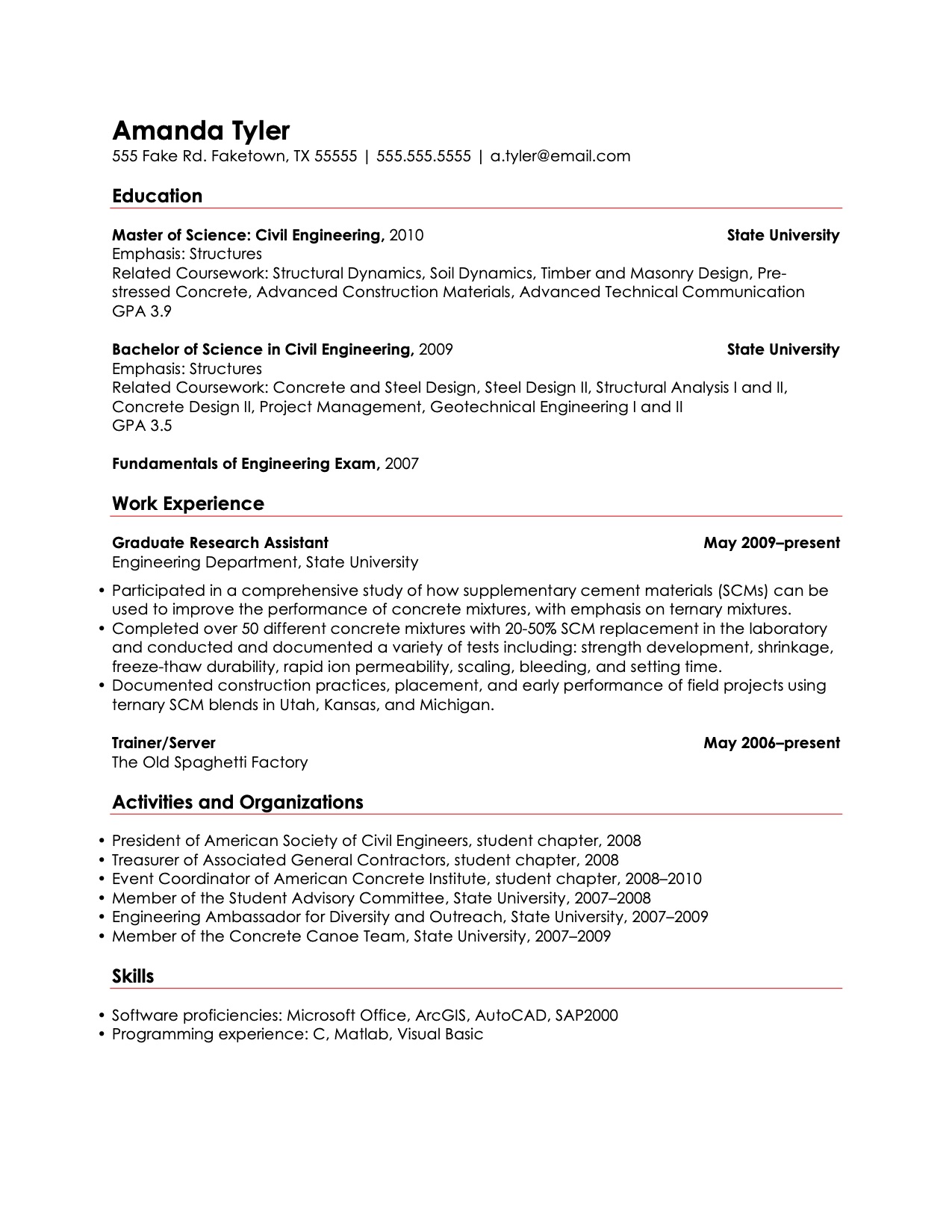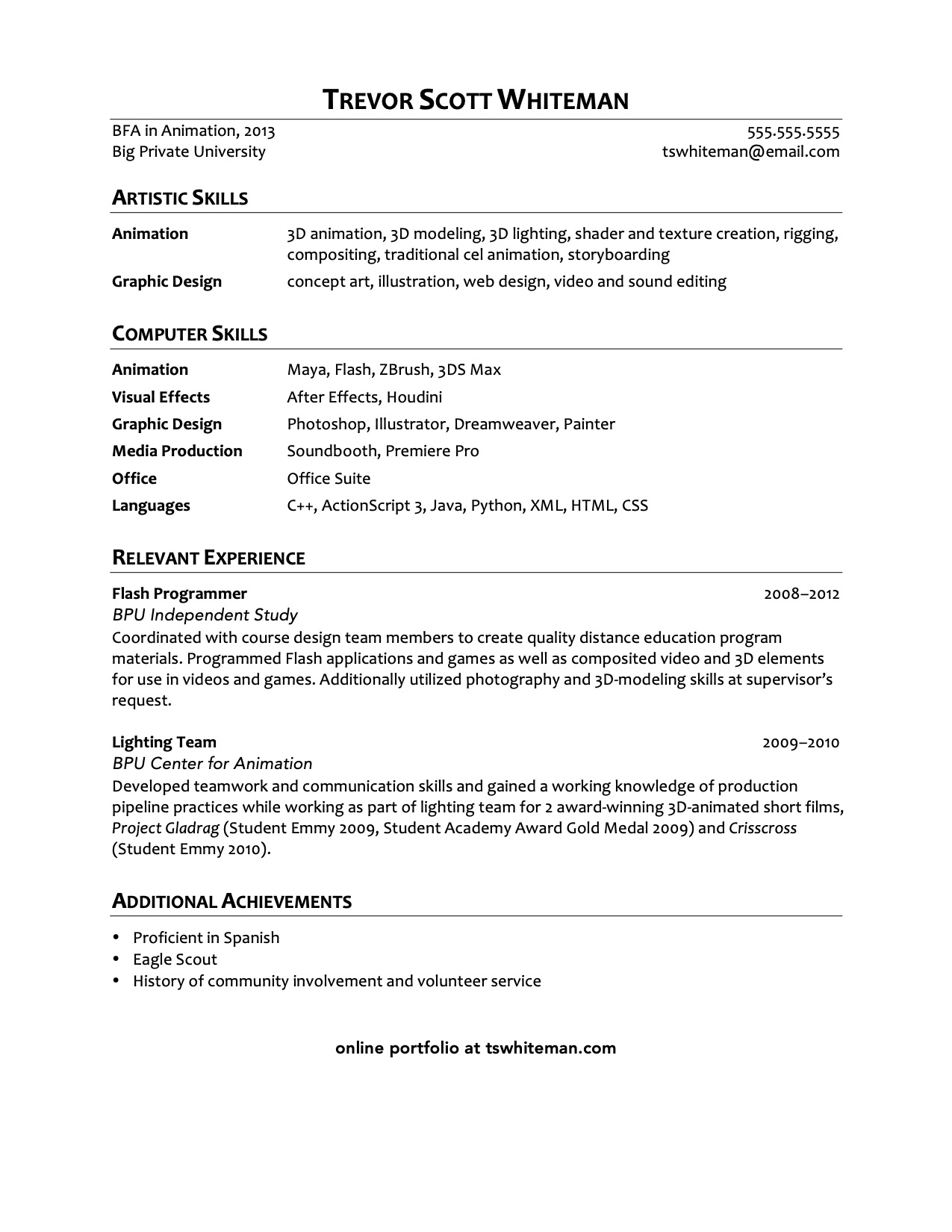So at this point, you have created a master resume that includes all the raw material necessary to craft a resume. On top of that, in the last reading we discussed an employer’s thought process in evaluating resumes and cover letters. All the pieces are in place: the next step is to make a job-specific tailored resume that convinces the employer to interview you.
How Much to Include
Imagine you’re a food critic and you’ve just sat down in a promising new restaurant, ready to review the food for tomorrow’s newspaper. A positive review could make the restaurant successful; a negative one could spell its doom. You’ve ordered a variety of dishes that’ll give you a good sense of the chef’s abilities and vision, but then, before your food can arrive, the server brings a tray of free bread.
You know you should save room, but…free bread.

Throw in free drink refills and you're doomed.
Photo by Victoria Shes on Unsplash
When your order finally arrives, you eat a bite or two from some of the dishes, but you’re too full of bread to appreciate what the chef has accomplished. Your review in the paper is tepid; the restaurant goes out of business a month later.
This experience not unlike the experience of reading some resumes. The writer hasn’t been careful about what he or she includes, so the reader fills up on fluff before ever finding the main course. It’s worse when you remember that the person reviewing resumes is likely reading dozens at a time—it’s like they are speed-reviewing restaurants, sitting down at table after table, trying to cram down as much food as possible to get a sense of the quality, but very soon they are all but unable to cram in another bite.
Because of this, it’s essential that your resume offer only the best, most relevant, most representative details and that you’ve minimized any fluff or redundancy.
It might help to think of yourself less as a restaurant chef and more as a caterer hoping to score a job providing food for a fancy wedding—instead of providing whole plates, you provide a tasting menu of small bites meant to suggest the range of your abilities and offerings.

Photo by Kelly Jean on Unsplash
What to Include
Okay, so we know that we should edit ourselves carefully to only include the best bits of our experiences on a resume, but what exactly constitutes the “best bits”?
To answer that question, we need to go back to the ideas presented in “The Employer’s Perspective.” There, I presented three types of things employers are looking for (official stuff, hard skills, and soft skills) along with three filters employers have in mind as they narrow candidates (must-haves, nice-to-haves, and good fit). Let’s put the two groups together to make a nice little matrix:
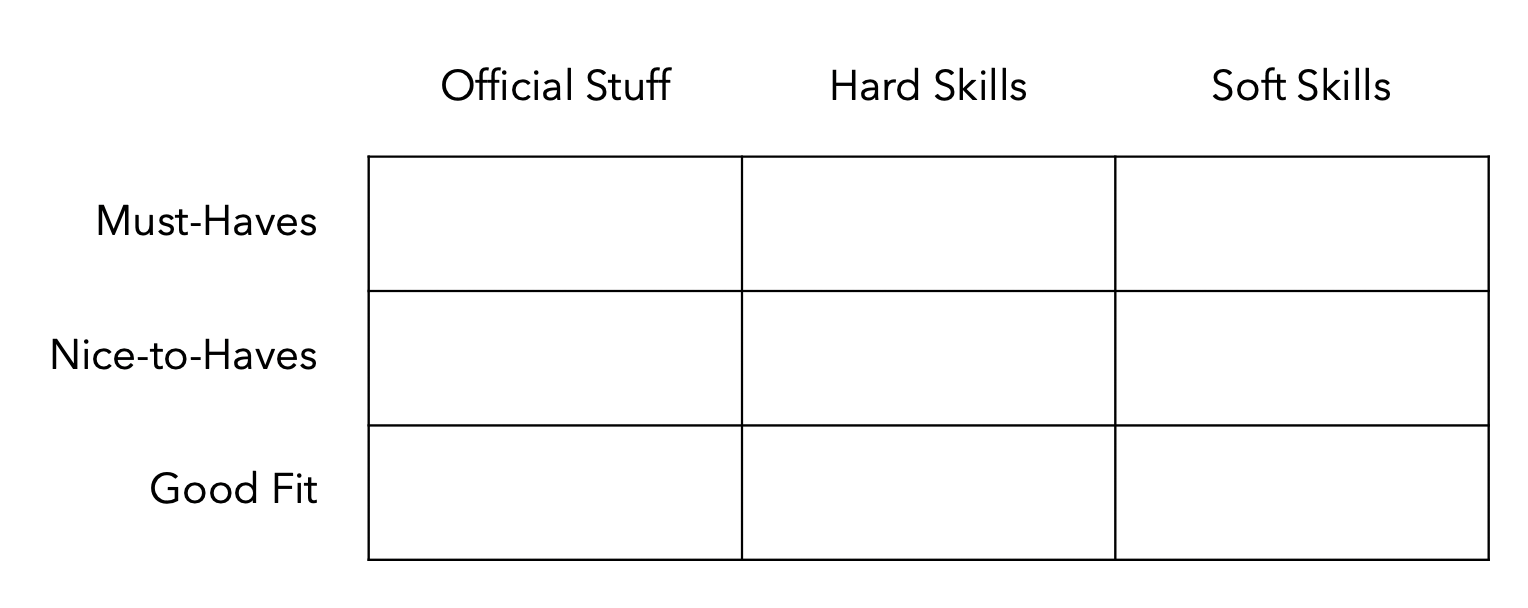
Note that not every cell in the matrix is useful. Think about it: When an employer is skimming resumes for the first filter, asking whether candidates have the must-have items on the employer’s list, he or she is likely scanning for official stuff and hard skills. After all, you can’t hire an engineer who doesn’t have an engineering degree and who doesn’t know how to use the software engineers must know how to use. For some jobs (especially those that require fewer technical skills, like general office jobs or positions related to the humanities) certain soft skills can be included in the must-have category. Think of a sales rep—the soft skills of communication and persuasion are crucial must-haves for such a job.
For the second filter of nice-to-haves, the employer’s focus in more likely to be on key soft skills that will enable the employee to perform the work as well as hard skills (an additional programming language, an eye for design, a proficiency in French) that are useful but not essential. Official stuff like degrees and licensures are unlikely to play a role in this filter because you either need a certain degree or you don’t; however, previous work experience is often seen as a nice-to-have rather than a must-have.
The last filter—whether or not the prospective employee is a good fit—is usually handled at the interview phase, but savvy employers are always on the lookout for red flags in resumes. This can mean a lack of the soft skills related to teamwork and communication (as indicated perhaps by a spotty work history or one marred by a series of short-term jobs). If you’re a fresh college graduate just hitting the job market, however, you won’t be expected to have a long and consistent job history—short summer jobs and internships are par for the course. On the contrary, having a few of these on your resume can show that you understand more than just the world of school, that you’ve dipped your toe into the real world of workplaces.
So here's what our matrix looks like now:
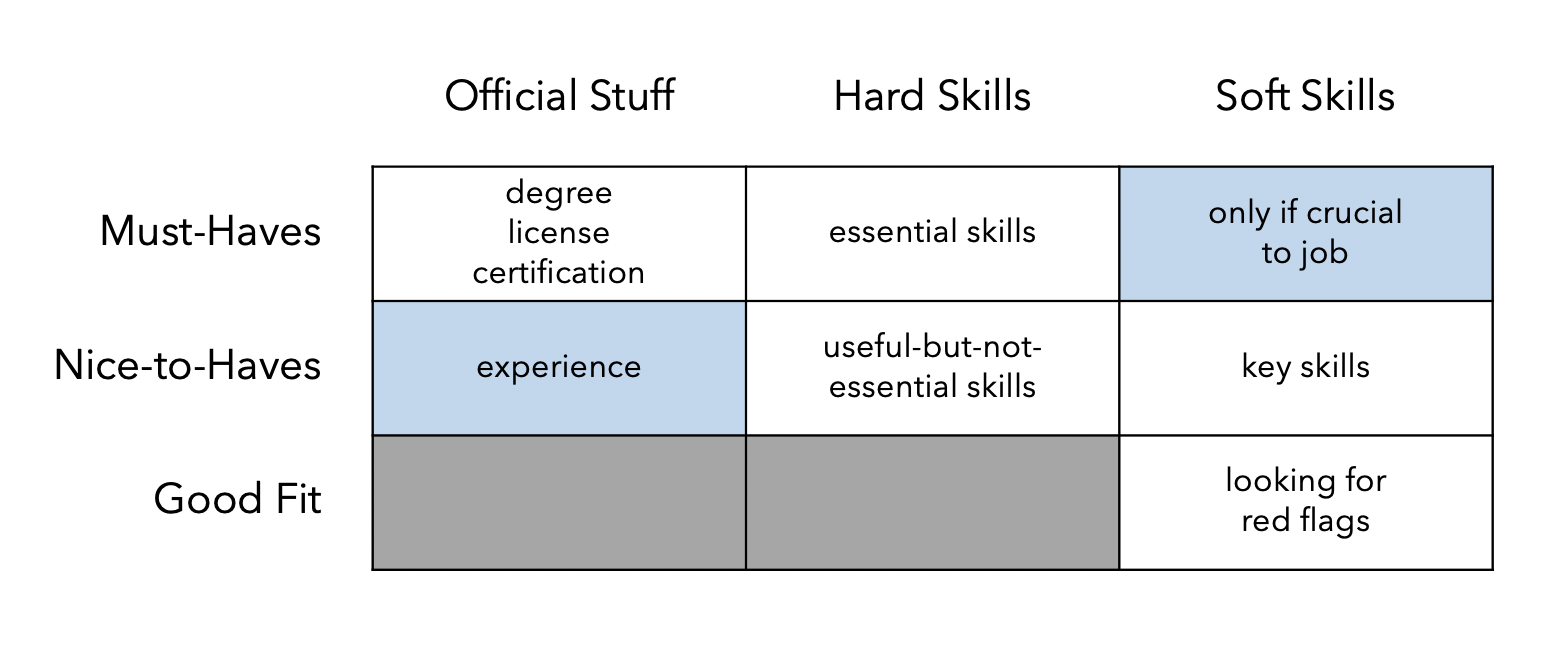
Analyze the Job Ad
In order to figure out what items should be on your tasting menu (I mean your resume°), you’ll have to carefully analyze the job ad and put yourself in the employers shoes, trying your best to figure out what he or she is looking for. If the job ad is terse or light on details, it might help to research the company a bit to see if things like their mission statement or company history offers clues about what they value.
My suggestion is to use the matrix above as a guide. Also, be aware that job ads aren’t always all that well written—they frequently repeat themselves or talk around what they mean. For example, the ad may not come out and directly say “Writing ability is a must-have.” But if you see writing talked about in multiple places and ways throughout the job ad, you can reasonably conclude that it’s a crucial skill they are looking for.
Once you have filled in the matrix, you might need to edit your list down a bit—you're likely to have a long list of soft skills, not all of which will be considered crucial in the mind of the employer. The job ad might say that they are looking for a well-organized expert communicator with a good team spirit, the ability to accept criticism, the confidence to dream big, the heart of an innovator, and a warm personality clients love—but most of that is business-speak and empty rhetoric. You have to read between the lines and do a bit of imagining to figure out which of these nice-sounding soft skills are actually foremost on the employers list of priorities.
Whatever you decide will be a gamble. After all, you could choose to focus on the wrong skills. But better to focus on a few skills and get it a bit wrong than to try to include everything on a one-page resume and end up with just a bunch of vapid, weakly supported nothing.
Pull Ingredients from the Master Resume and Get Cooking
Next it’s time to decide what items from your master resume should be used on your tailored resume. In other words, go through it with your matrix in mind and find those things that will help you show you have what the employer is looking for.
Must-Haves
The nice thing about must-haves is that they are typically things that are either there or they aren’t: either you’ve earned the needed degree or you haven’t. Either you’ve gotten certified or you haven’t. This means that including them on the resume is generally as simple as listing them somewhere.°
The most common must-have item for an entry-level, post-college job is a degree in a certain major or area, which explains why an “Education” section is near the top of most resumes you see. It also explains why the college entry in that section usually begins not with the name of the university attended but instead with the name of the degree and major—the resume writer wants the reader to see instantly that they meet the basic requirement for the job, so they put it in the most visible position they can.
The second most common must-have is previous experience, which is why a work history section usually appears next and is best when it shows a history not just of random jobs but of work related to the job in question. For recent college grads who don’t have a ton of real-world work experience, listing an internship, a position as a research/teaching assistant, or volunteer or freelance work can be a great way to show related experience. Even membership/leadership in industry-related student clubs, honor societies, and other extracurriculars can imply some degree of experience, as can listing upper-division courses you took and/or describing the projects completed in such classes.
Many fields (such as nursing) require specific certifications and licenses—if this is the case for your field, you’ll want to make sure to include your certifications in a visible location on your resume. Same with hard skills that are must-haves. For example, a software engineer will commonly list the programming languages and software he or she is proficient in. The more of a must-have such hard skills are, the more visible they should be presented.
Nice-to-Haves
Nice-to-haves are typically hard and soft skills, and with these, the amount of proficiency or experience that you can demonstrate is as important as their presence. This relates directly back to the third mistake everyone makes: making claims without evidence.
Take “writing ability” for instance. Anyone can have a section on their resume that says “Skills” and then place a bullet point in that section that says “excellent writer” or some such thing. But why should anyone believe you if you do? It will always be more convincing to the reader if you give an example of you using that skill to create an impressive outcome. Something like this perhaps:
Wrote 3–4 internal memos per week; was praised by supervisor for clear and consistent communication.
See how that sentence proves that the writer has the skill he or she is claiming to have by providing evidence of it?
Most people think of the bullets or paragraphs that go under each job entry in their “Experience” section as the place that they explain what their job duties were for those jobs, but that’s not the right approach. The reader doesn’t really care what you did at those old jobs, and in most cases they already know. I mean, there’s no mystery about what a “pizza delivery driver” or a “grocery clerk” does.°
Those bullets or paragraphs aren’t for listing job duties—they are for providing evidence of the must-have and nice-to-have hard and soft skills in action. So instead of thinking of a job entry in this way—
Job Title
Business Names, Dates of Employment
- Job Duty 1
- Job Duty 2
- Job Duty 3
—think of it in relation to your matrix, this way:
Job Title
Business Names, Dates of Employment
- Example of highest priority hard/soft skill in action
- Example of next highest priority hard/soft skill in action
- Example of next highest priority hard/soft skill in action
Mary's resume, shown above, has some great examples of job bullets that convey what she did at her previous jobs while also giving strong evidence of hard and soft skills in action, the kinds of things her future employers might be looking for.
All this said, it’s not wrong to list your hard or soft skills in a nice, neat bulleted list somewhere on your resume, especially if they are a high-priority interest for the employer.° But don’t for a second think that listing them is enough—find ways to offer evidence of how good and experienced you are with them. Job entry bullets are a great location, and so is your cover letter.
Good Fit
As I said above, the good-fit category isn’t something you need to worry too much about at the resume phase—employers will usually evaluate whether you’re a good fit for their work environment when they interview you. But you can indicate that you are the type of person who fits in well by making sure your resume shows that you are well-rounded and involved in more than just school all day every day. But this shouldn’t take up much space on your resume, nor should it get top billing.
Check out Amanda's resume, shown above. Nearly everything on the resume is closely related to school, which could give the impression that she only knows how to succeed in an academic setting—an employer might see this as a red flag, might assume she won't flourish with real-world high stakes and real-world colleagues instead of fellow students. So Amanda includes two lines revealing that, while she was earning both a bachelor's and a master's degree in what looks like record time, she was also holding down a job as a server in a restaurant. She doesn't even offer any bullets about this job, assuming that the reader already knows what a server does and what applicable soft skills (teamwork, working under pressure, communicating with customers) come with that. Not only that, but by revealing she was also a trainer, she implies that she did her job well enough to be entrusted with preparing new hires.
A Few More Tips
Here are three videos that include additional advice on how to tailor individual sections of your resume to best present the must-haves and nice-to-haves that you have to offer:
And here's one other piece of advice: Whenever you write a new bullet for a job entry or create a new way to arrange your Skills section or whatever, go back and add it to your master resume. The more you do so, the less work each new resume you tailor will be.




